Cheese fondue or raclette? Or even both? And which did you have first? Cheese fondue is considered the national dish in Switzerland. It owes this status to a marketing campaign by the Swiss Cheese Union. To boost domestic cheese consumption, cheese fondue was made palatable to the Swiss after the Second World War.
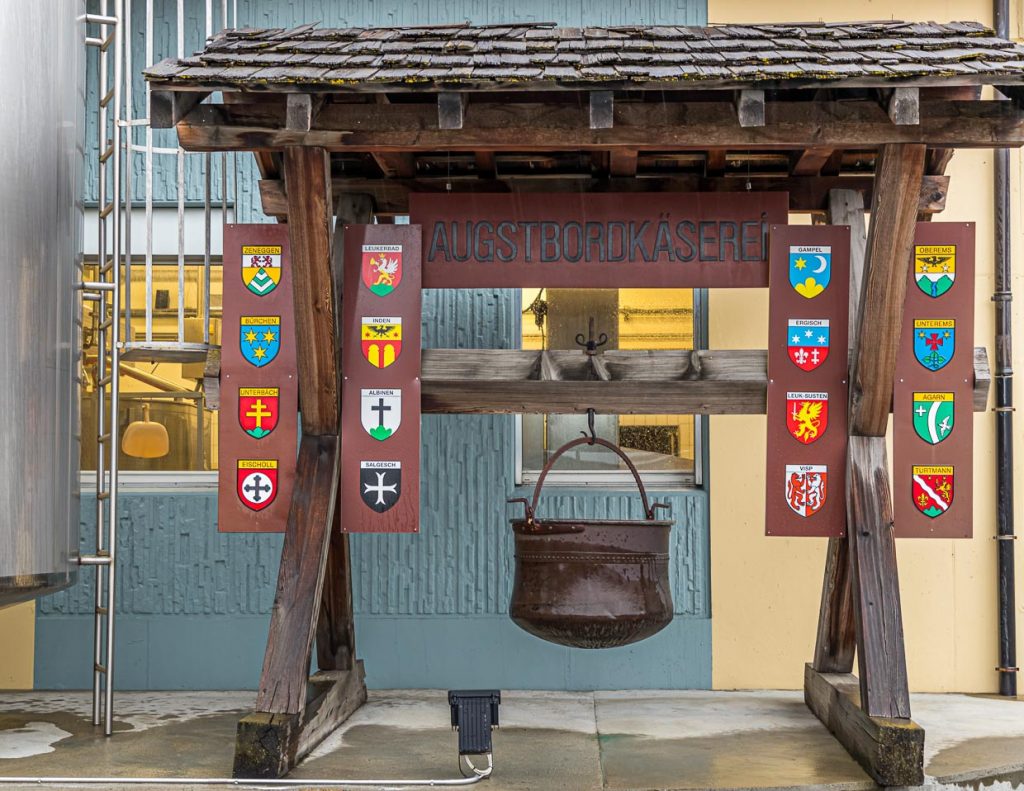
Who invented it? The Swiss, of course!
Raclette has a much earlier origin. First mentions date back more than 400 years. The origins of raclette also score points when it comes to alpine romance. It convinces with far more tender melting than the state-imposed fondue campaign. Shepherds, it is said, placed a quarter-sized wheel of cheese on the embers of their campfire. As soon as the cut edge began to melt, they took the cheese in their hands and used a knife to scrape the liquid cheese onto the bread. This is how raclette, derived from the French word racler for scrape, took its origin in the Valais mountains. It was not until four centuries later that it was domesticated in small Teflon-coated pans and thus became a ritualized social dish at Christmas and New Year’s Eve.
Raclette cheese all year round
While in other regions of Switzerland and in the rest of the world the raclette machine is put back into the cellar after New Year’s Eve, in Valais the raclette cheese is available all year round. Raclette cheese is spread at every village festival. If spontaneous guests come to visit, raclette is a most unpretentious meal. Potatoes and half a wheel of cheese are enough to make more than 10 people full and happy. Crowds on this scale are difficult to imagine at the turn of 2020, but desirable again for the future.
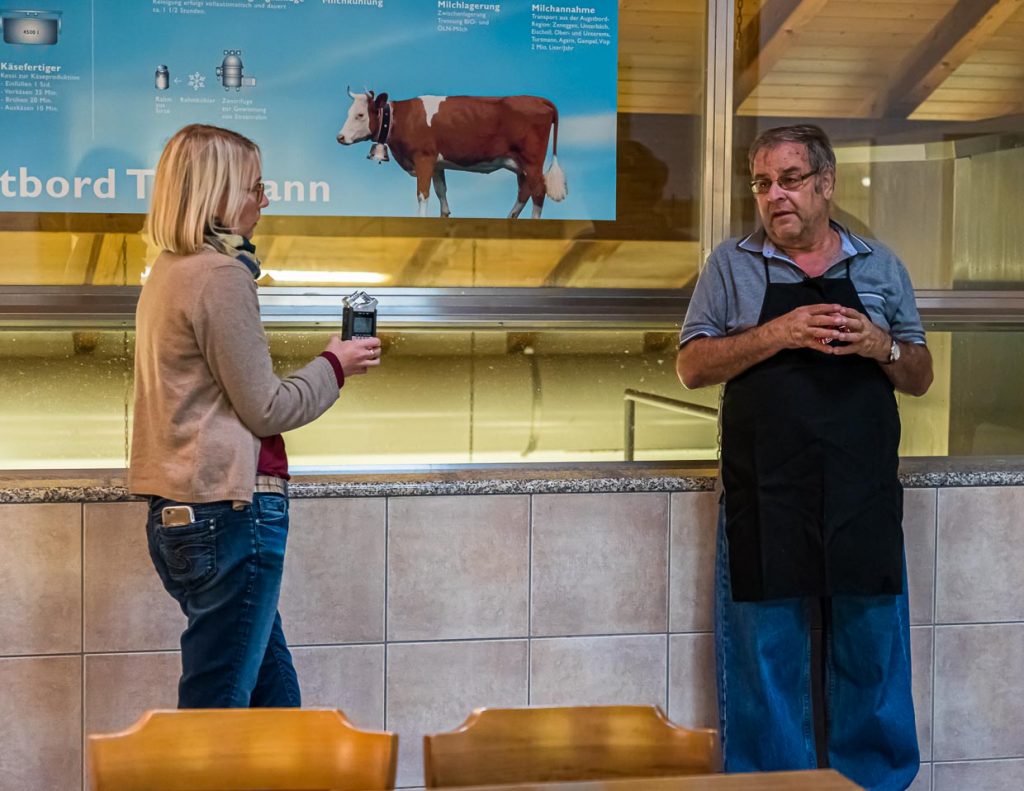
Demonstration cheese dairy and raclette practical course
The Augstbord cheese dairy in Turtmann, a small village between Visp and Sion in the Rhone Valley in the Valais, produces raclette cheese from raw milk. The milk comes from cows in the surrounding area. They stand on meadows at an altitude of between 600 and 1,600 meters, eating lush grass with a fair amount of alpine herbs, thus laying the foundation for the Valais specialty. Processing raw milk means being fast, because raw milk has to be processed within 24 hours. On peak days, the Augstbord cheese dairy produces 330 cheese wheels a day. This amounts to 320 tons of Raclette cheese per year. The creamy cheese, which smells of alpine herbs, is only sold after 90 days of ripening. It then bears the name Valais 65 and also receives the AOP seal for its protected origin. For fans of the widespread pan-fried raclette, who until now have only known pre-sliced and packaged supermarket goods, raclette cheese from Valais is a real revelation.
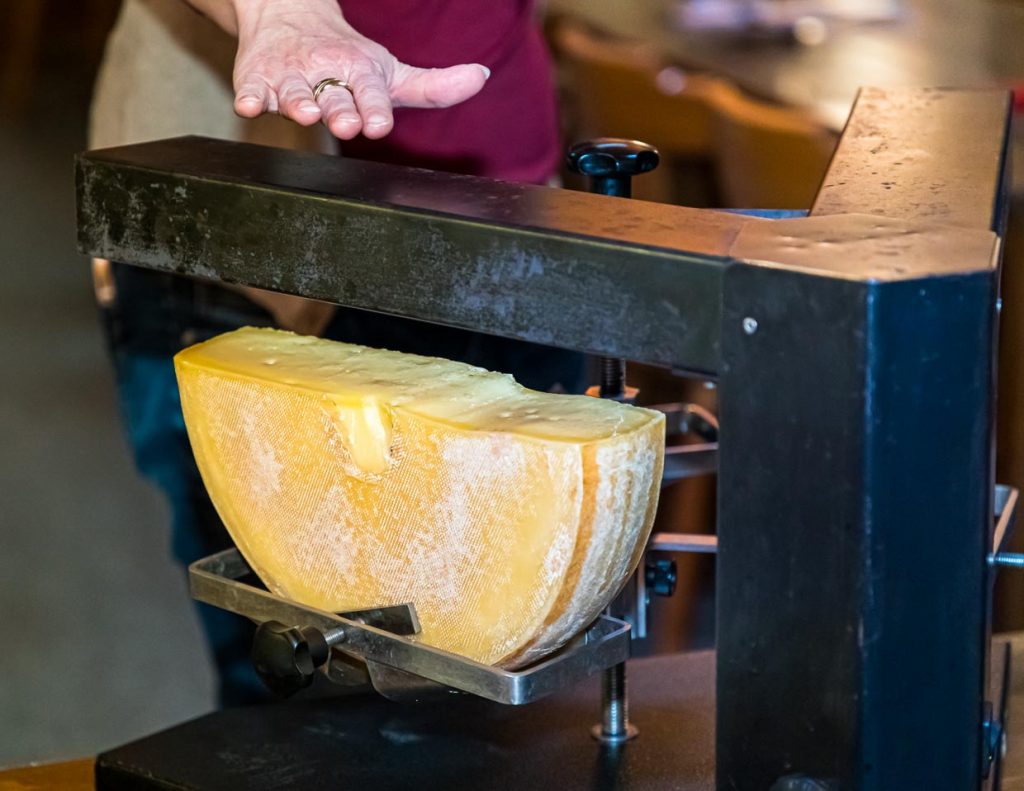
Simple triad: cheese – potato – pickles
Often the simplest things are the best. The simple preparation and manageable list of ingredients are another explanation for the popularity of raclette and cheese fondue. Raclette etiquette includes not waiting in any case so that everyone can eat at the same time. The rule is, one eats, the other talks. Because the cheese, which was just blistered and creamy-glistening from the cheese wheel, should be consumed as warm as possible.
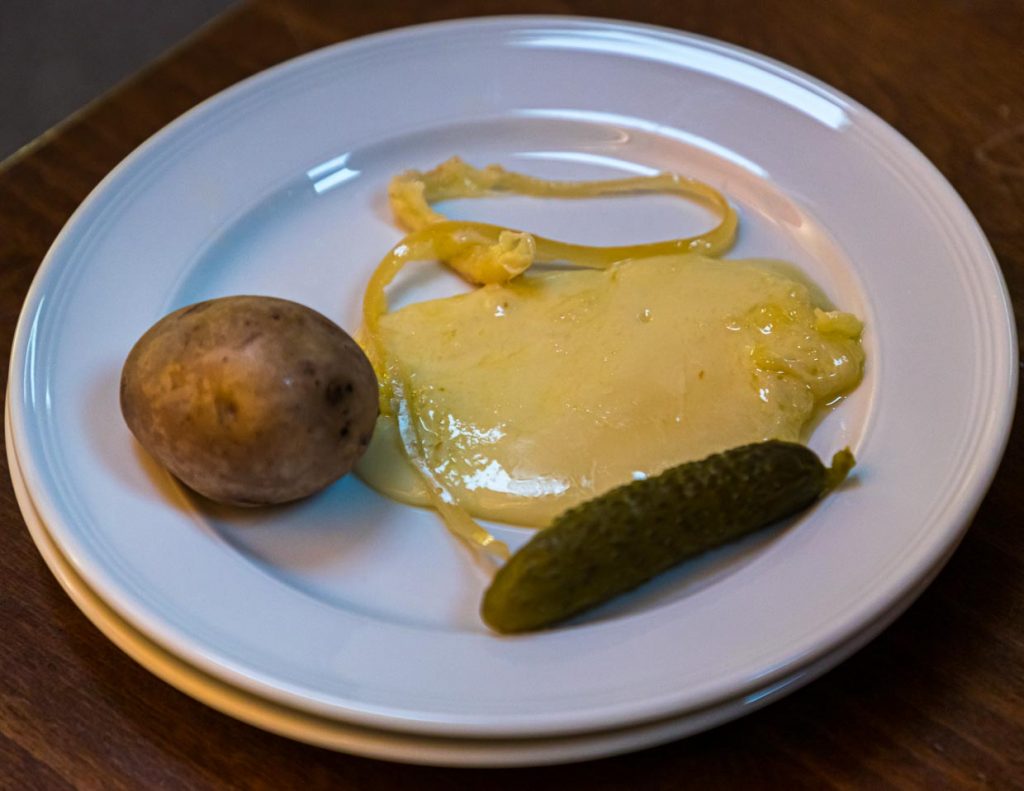
Raclette cheese is eaten while it is warm. The only rule for those at the raclette oven is not to spend too much time raking, or chatting. When the cheese starts to bubble, it’s high time to take it in your hand and spread it with a knife from top to bottom in one go through onto the plate placed underneath. With a professional like Marcel Ammann, the president of the Augstbord cheese dairy, this looks child’s play. The cheese dairy in Turtmann also offers raclette workshops where you can learn about the different raclette ovens and, above all, how to handle melted cheese smoothly.
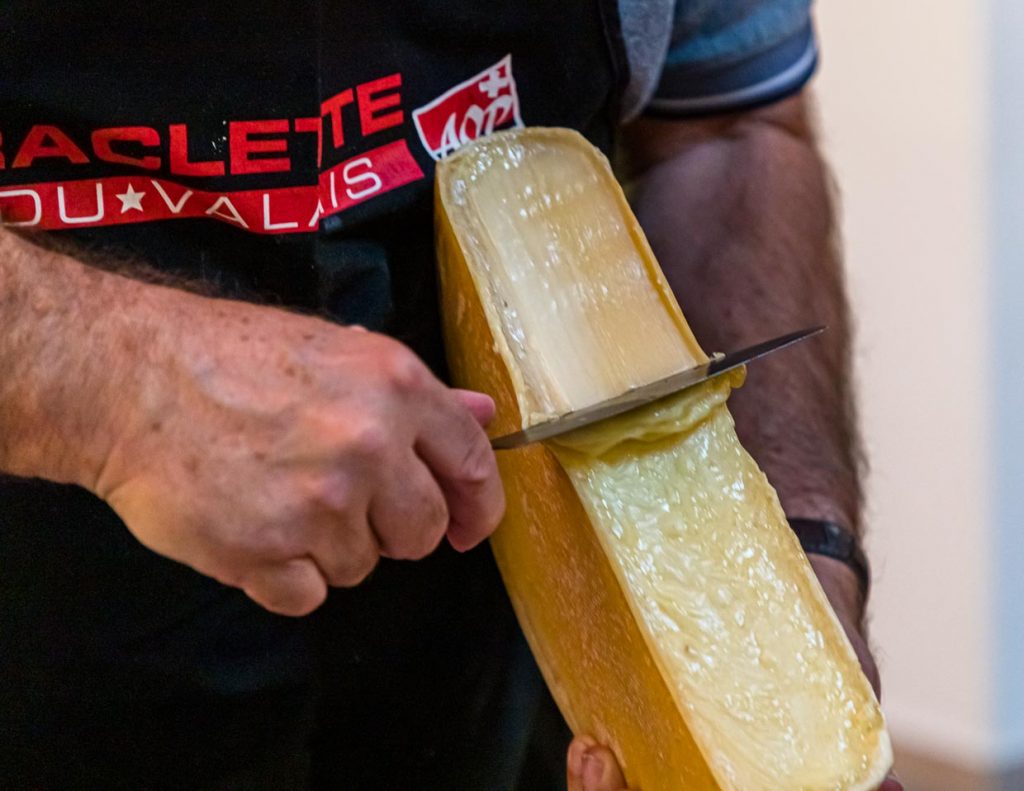
By the way, 200 to 300 g per person is considered a stomach-friendly portion. To the category of old wives’ tales belongs that a downstream liquor facilitates digestion. Rather the opposite is the case.
Of cholera and other plagues
When traveling through the Valais, one cannot avoid the topic of cheese. The Valais Rhone Valley is virtually littered with cheese dairies and good cheese stores. In the restaurants you can try raclette, cheese fondue and other specialties. They dare to do something! I think to myself in the Corona year 2020 when I look at the menu in a restaurant in Visp. Here, cholera is listed as a regional specialty. That arouses curiosity, is ordered and extensively advertised by the service.
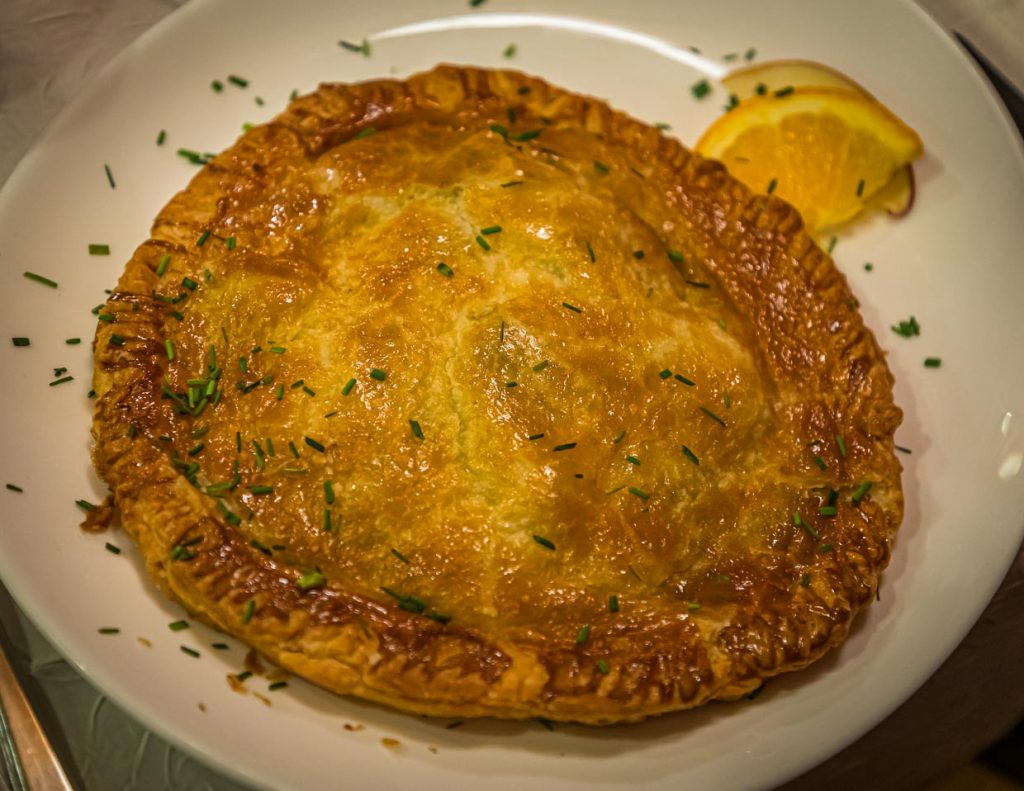
So now I know that this culinary unpretentious dish comes from the time when cholera was raging in the country. At that time, cholera patients were not allowed to leave their homes. That sounds familiar again today. Deliveryando was not yet invented and so was mixed together what was still available in the house. Cheese, bread and some vegetables. All braided into a kind of patty and baked in the oven.
In terms of taste, however, I would always prefer a real Valais Raclette, consisting of cheese and potatoes to the dish of epidemic origin. Especially because the restaurant version uses bland puff pastry. Nevertheless, a humorous and casual approach to a real plague of humanity. So it would be nice if in the near future we no longer read the word Corona in every headline, but at most where it has never attracted unpleasant attention, in the drinks menu at the Mexican. Happy New Year!
The research trip was partly supported on site by Switzerland Tourism

